I already had two sets of No. 1 (2.25 mm) Inox sock needles and mail ordered a cone of 2/8 tweed fingering yarn from Pollywogs in February.
After knitting a swatch, I decided that I wanted a bit more twist in the plies, so instead of knitting it right off the cone, I ran it through the spinning wheel onto spools, then wound the yarn into two center pull balls in March. I left it sitting on the shelf to set the twist.
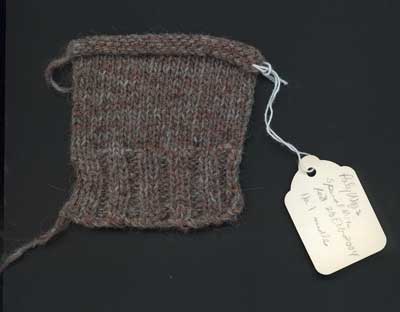
In April I had some other projects connected with earning income, so didn't start much in the way of crafts. When May rolled around, I made two doilies from vintage patterns (Williamsburg and Ripe Wheat) and continued working on the second gray hat.
Although the motivation would seem to be stronger in the winter, spring is when I get serious about knitting socks and mittens. The brighter sun and longer days make it easier to see stitches when working with darker wool.
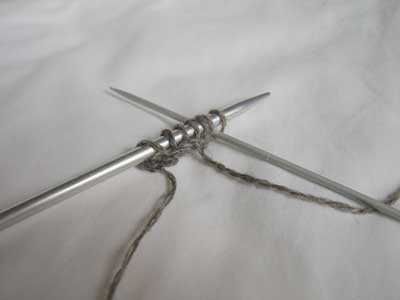
Most knitting starts with casting on. I use a cable cast-on because I feel it is sturdier. Because there will be a row of knitting on top the cast-on stitches when I join, it will be easier to avoid twisting the piece. One of the most common pitfalls in socks is casting on too tight. I cast on 72 stitches on a No. 6 (4.25 mm) double point needle.
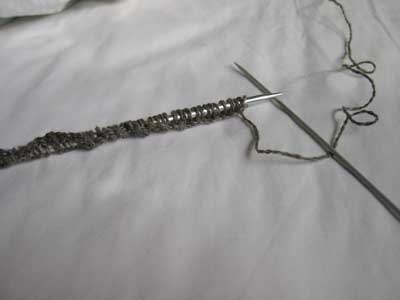
Socks and mittens seem to work well using multiples of 12 for stitches. That allows equal splits onto three needles for the bulk of the knitting, comes out even for elastic 2 x 2 ribbing, and comes out even when you split half the stitches onto one needle and one quarter on each of two needles when you do the heel and the toe.
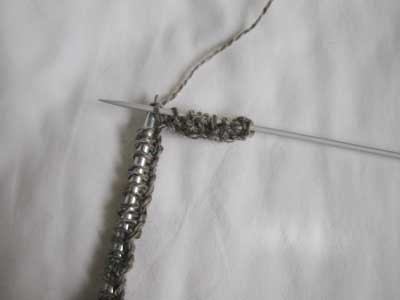
Using one of the sock needles, I knit 2, purl 2 for 24 stitches (1/3 of the total), then start knitting up the cast-on stitches to the second needle.
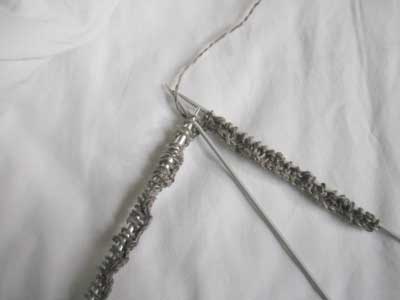
When there are 24 stitches on the second needle, start taking them up on the third needle. When all the stitches have been split onto the three needles in the K2 P2 pattern, it is time to join using a fourth needle.
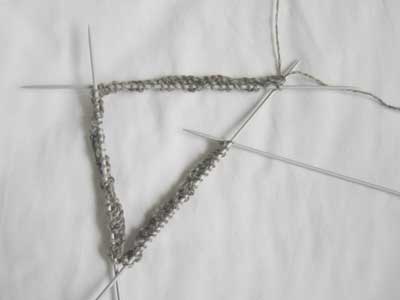
The joining stitch may be a bit awkward, but that can be fixed when you bind in the end. Knit around in ribbing and check again to make sure the work isn't twisted.
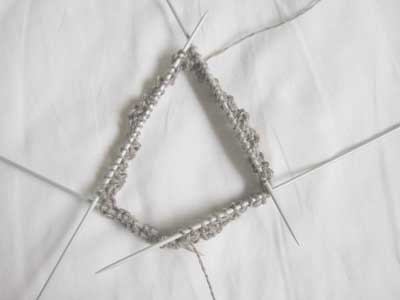
At first the ribbing will seem very sloppy and loose. Keep on going around in the pattern. At about an inch, the ribbing will magically start to draw together.
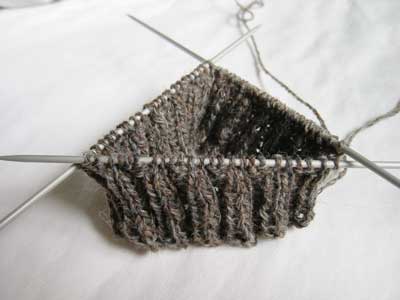
Now for the "secret" tip for socks, mittens, and gloves. Pick up the No. 6 needle and the second set of sock needles and do exactly the same thing using the second ball of yarn. Alternating between working on each of the pair of socks makes it a lot easier to make them match.
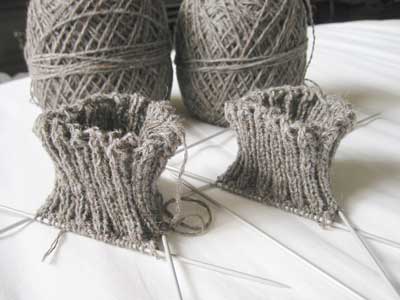
The knitters meetup is tomorrow. I can take the socks and the grey hat to show two kinds of projects.